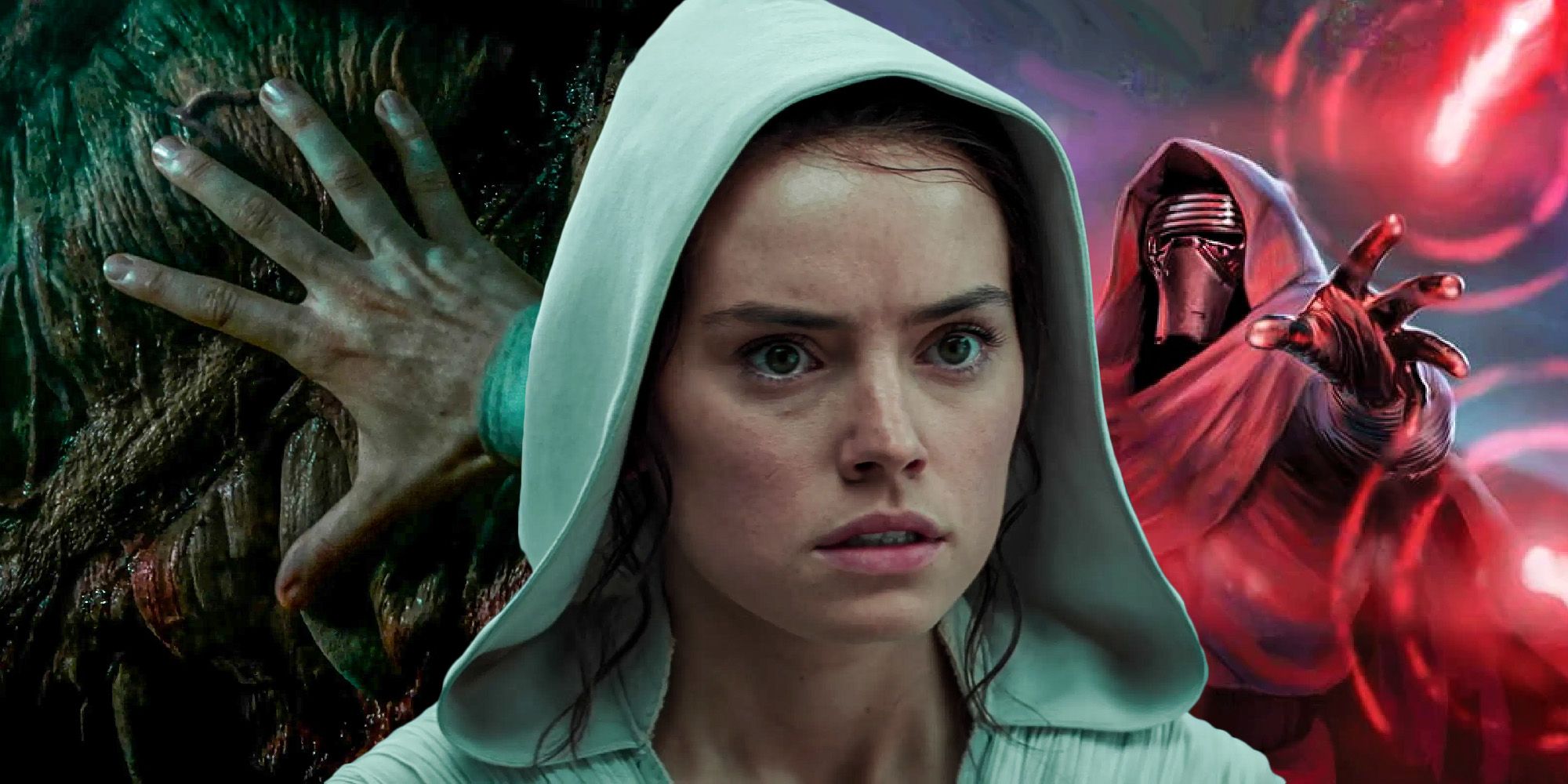
Disney's Star Wars sequel trilogy delivered a number of new characters, planets, stories, and, of course, several new Force powers. The sequel trilogy in many ways redefined the Force, particularly the definition of “balance” as it was understood in the original and prequel trilogies, and made good on the promise of new applications of the Force and its dark side. Now that the sequel trilogy has concluded, all the new Force powers that were introduced in the movies can be analyzed and explored.
The Force is a ubiquitous aspect of the Star Wars franchise. It can be summarized as fundamental energy created and nourished by the natural cycle and balance of life, death, emotion, and nature. The corruption of this natural balance is the dark side, whose users undermine the natural energy for their own needs. Technically, there are no Force “powers” per se, because it can do anything its user needs. The Force and its dark side can be applied in various ways that resemble superpowers.
Nearly all of the new Force powers introduced in Disney’s sequel trilogy technically made their debut in non-movie material from both the current canon and the Star Wars Expanded Universe (now known as Legends). Though these powers were first seen in comics, video games, and television series’, Disney’s sequel trilogy gave these Force powers their live-action cinematic debut.
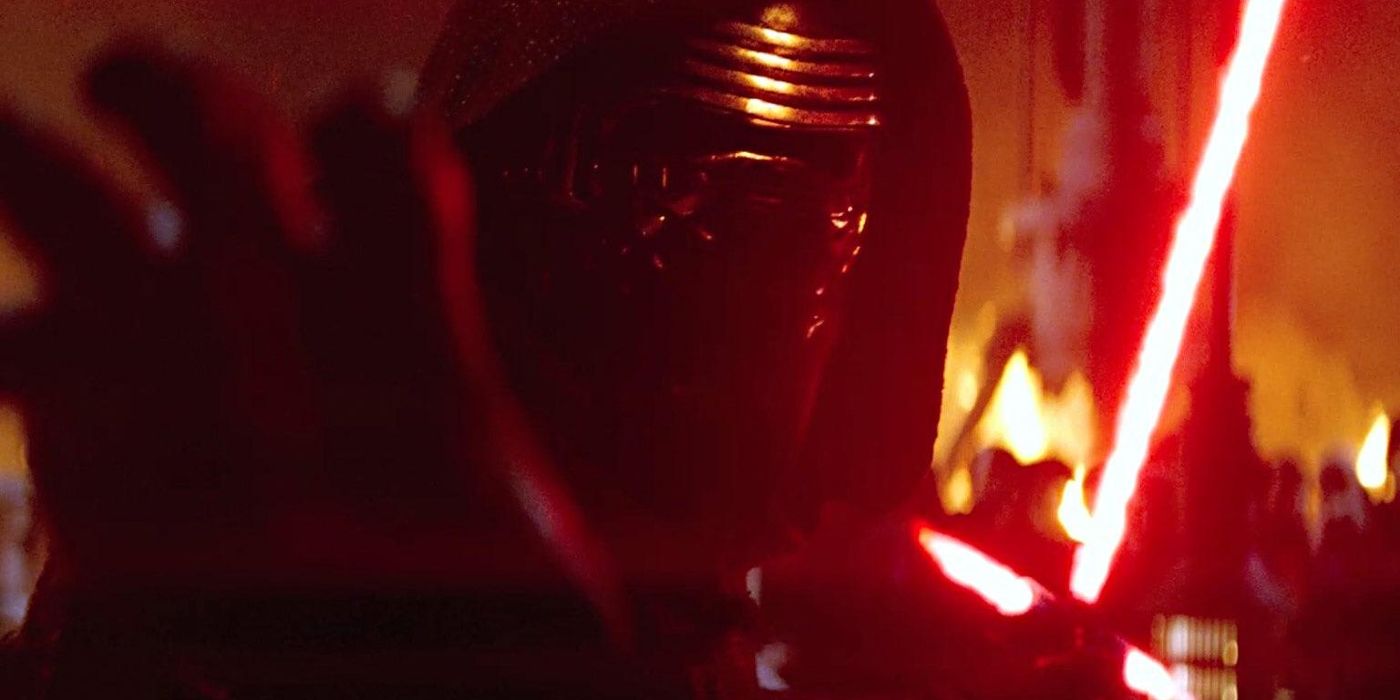
In his introductory scene in Star Wars: The Force Awakens, Kylo Ren (who is neither Jedi nor Sith, but the leader of a new dark side religion, the Knights of Ren) freezes Resistance pilot Poe Dameron in place and a blaster bolt in midair. Later in the film, he freezes Rey in place to probe her mind and capture her. Force Stasis is also used by both Kylo Ren and Rey in their final duel on Kef Bir, stopping their opponents’ lightsaber blades from hitting them.
This power was first introduced in the Legends novel Children of the Jedi, and was also seen in the opening cutscene of Jedi Knight: Dark Forces II, and is a usable power in the Knights of the Old Republic video games. Its use by Jedi, Sith, and Knights of Ren makes it something of a “neutral” power. An incredibly potent ability, Force Stasis can be used offensively to end a fight instantly, as Kylo Ren and Jerec did. As seen in Star Wars: The Rise of Skywalker, it can be used defensively too, blocking lightsaber strikes that its user might otherwise be hit by.
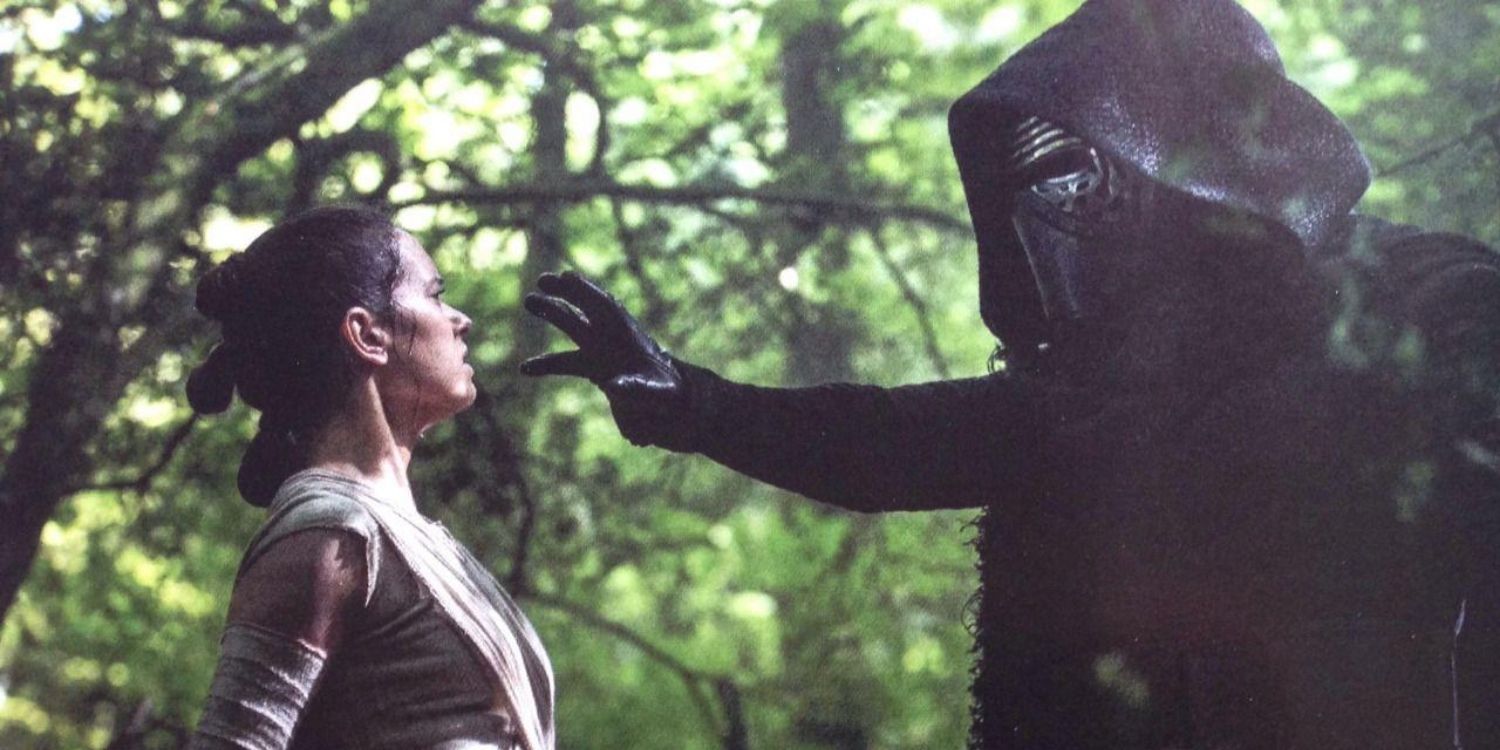
In their brief conflict on Takodana, Kylo Ren probes the mind of a frozen Rey. Once he feels that Rey knows the information he needs, he uses the dark side to render Rey unconscious before taking her to Starkiller Base for a more intense bout of dark side-fueled interrogation. This was the only use of this power in the Skywalker saga, though a similar one was used by Qui-Gon Jinn to calm a panicked Jar Jar Binks. Because of this, the power is likely also a neutral one.
Using the Force to sedate someone has been seen before in both continuities. In Legends’ Star Wars: The Old Republic, Jedi Master Yonlach uses this ability on the Sith Warrior’s companion, Vette to gain an advantage in their battle. In canon, Mace Windu uses it on Raki Hardeen after concluding an interrogation in Star Wars: The Clone Wars. This power may be derived from the Jedi mind trick, as it entrances its victim into a deep sleep, yet unlike the mind trick, it works on the strong-minded, like Vette and Rey.
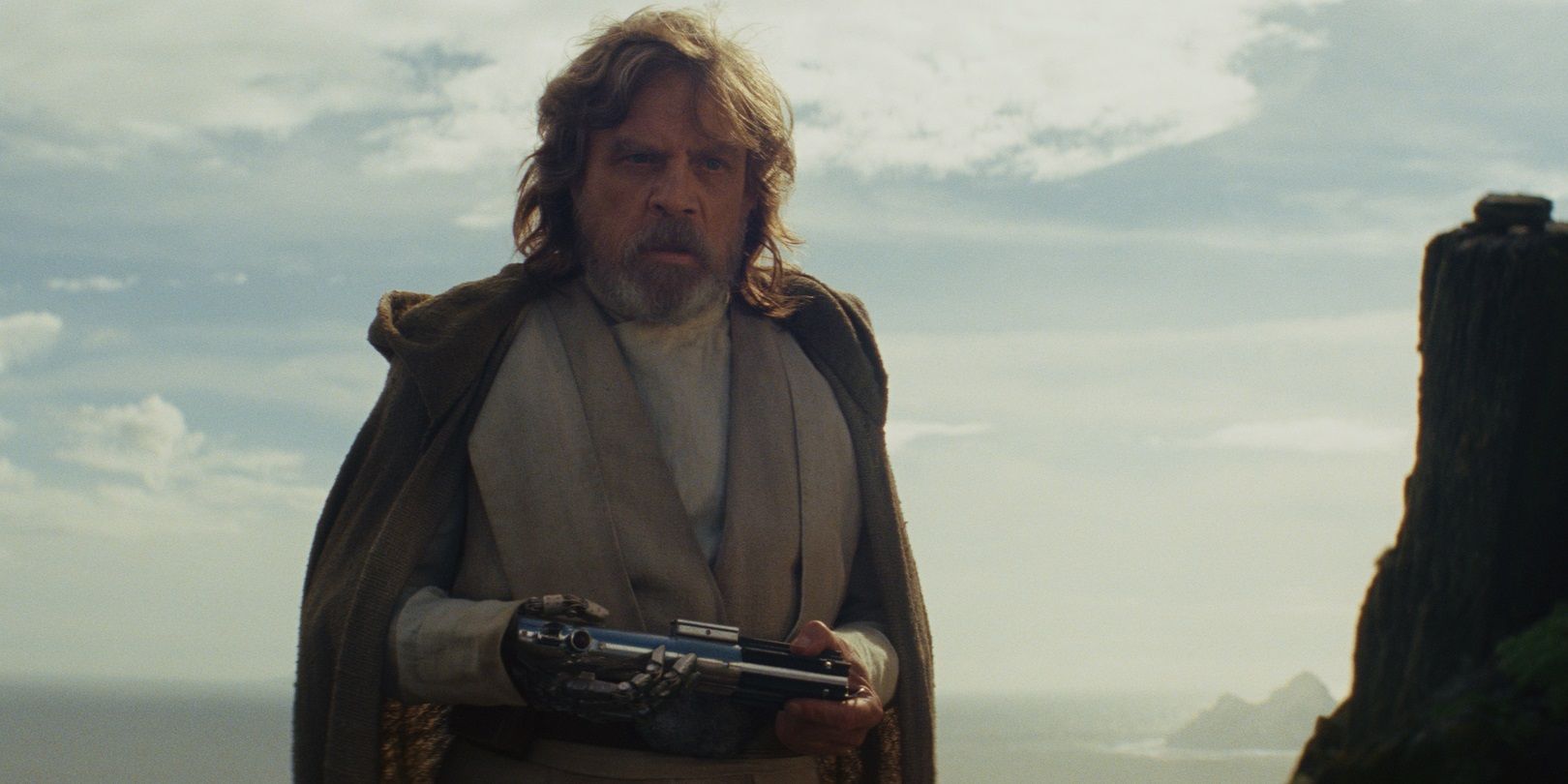
In Star Wars: The Last Jedi, Luke Skywalker opted to spend his final days on the planet Ahch-To, where he’s cut himself off from the Force. Because of this, he couldn’t sense the deaths of those in the Hosnian system when the First Order destroyed it, nor could he feel the loss of one of his best friends, Han Solo, when he was murdered by Kylo Ren. The ability to sever one’s connection to the Force has been seen before from Jedi in times of personal crises. In Legends, Kyle Katarn famously used this ability in Jedi Outcast, in response to his brief turn to the dark side in Mysteries of the Sith. The current canon’s Kanan Jarrus severed his connection as well after surviving Order 66 and becoming a fugitive of the Empire. An offensively-used dark side version of this power also exists in Legends, with the Sith Lord Darth Caedus temporarily blocking Ben Skywalker from using the Force.
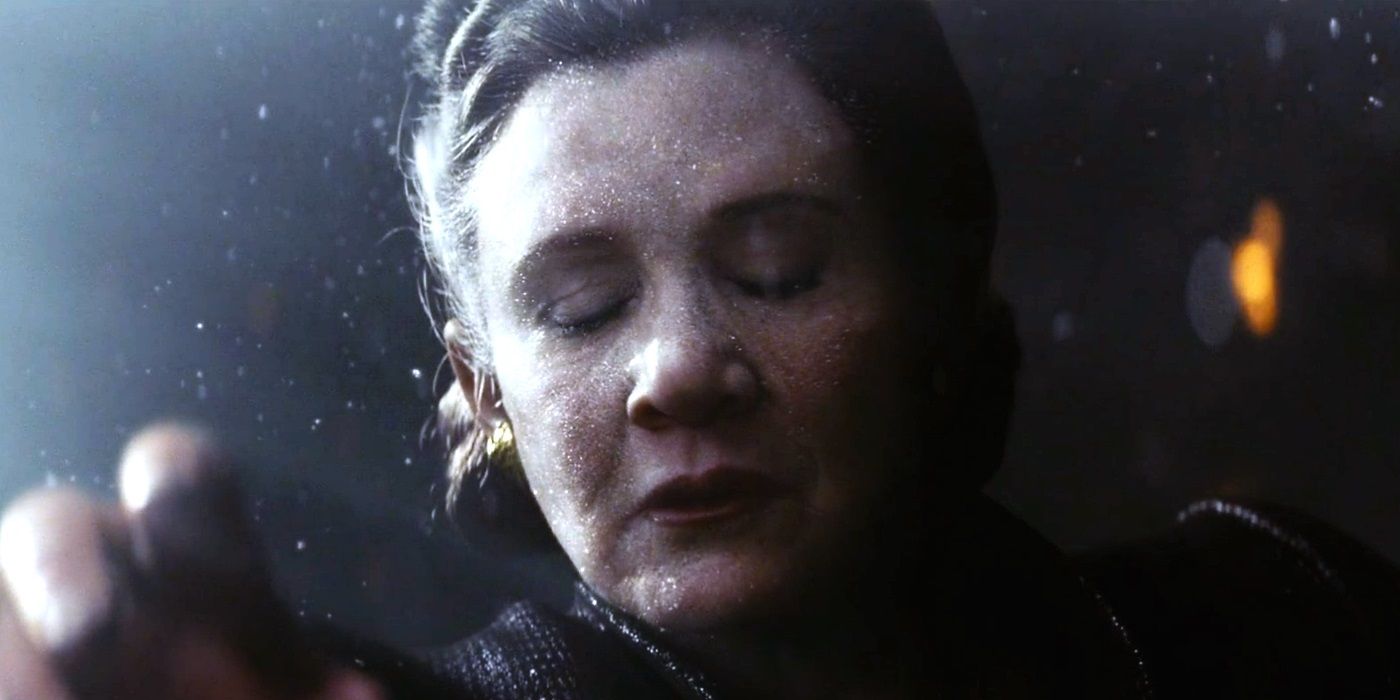
Star Wars: The Last Jedi featured a moment that was cathartic for many viewers: Leia finally using the Force in a live-action film. Seemingly doomed after being blown out of the bridge of the Raddus by First Order TIEs, Leia survived the vacuum of space for a time by protecting herself with the Force and pulling herself back to the Raddus where Resistance medics could then tend to her. Using the Force to protect oneself has been seen many times before in the Expanded Universe. Protection is a useable power in the Jedi Knight and Knights of the Old Republic series’. The power is typically used by the Jedi as a last line of defense in extremely life-threatening scenarios. In Legends, Jedi Master Shaak Ti survived what would have been a fatal lightsaber strike from General Grievous on Hypori by using the Force to protect her.

In The Last Jedi, Luke Skywalker’s final act before his death was to distract a First Order military formation and Kylo Ren by projecting an image of himself from across the galaxy to engage in a “duel” with the newly-appointed Supreme Leader. Though the exhaustion from this feat ended up killing him, it demonstrated an incredible mastery of the Force, and successfully bought the surviving Resistance members enough time to escape the planet Crait and fight another day.
Force projection first appeared in the Expanded Universe comic Dark Empire, where Luke, feigning allegiance to Darth Sidious and drifting dangerously close to falling to the dark side, used a projection of himself to get Han and Leia to safely leave the Deep Core world of Byss so that he could continue undermining Palpatine’s hidden Empire from within. Though it was first introduced as a dark side power, projection can also be seen used by Jedi, such as Mara Jade in Mysteries of the Sith. Unlike canon, the Legends version of projection does not appear to put a strain on its caster, let alone fatal levels of exhaustion.
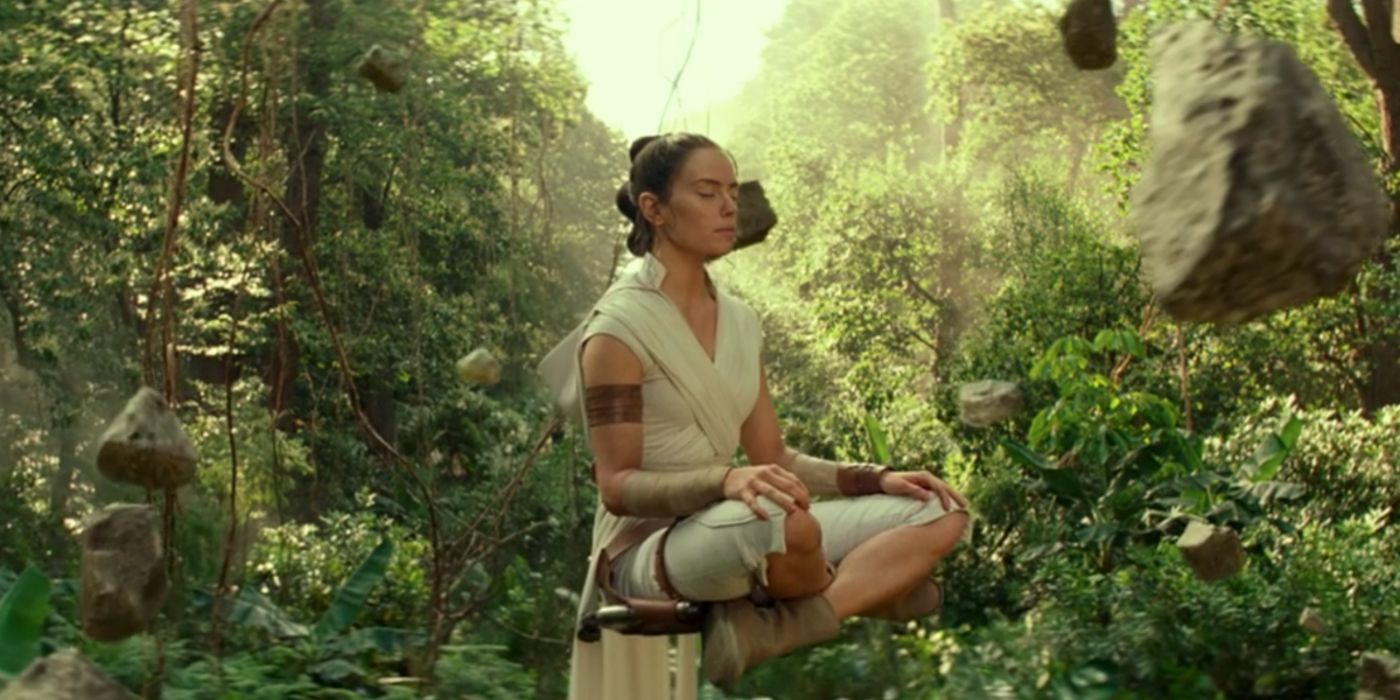
While Luke’s training on Dagobah in The Empire Strikes Back partially involved doing a hand-stand while levitating various objects, Rey’s introduction in Star Wars: The Rise of Skywalker shows her meditating while floating in the air, with rocks orbiting her. This moment was allegedly going to be how Luke was introduced in Star Wars: The Force Awakens before Rian Johnson stated that Luke would be cut off from the Force in his film. This form of meditation indicates a Force user with an incredible intrinsic connection to the Force. Although only Rey was seen meditating this way in canon, the ability appears several times in the Expanded Universe. Notably, this telekinetic meditation was first seen in The Courtship of Princess Leia, performed by Luke, one of the galaxy’s most powerful Force users, especially in Legends.
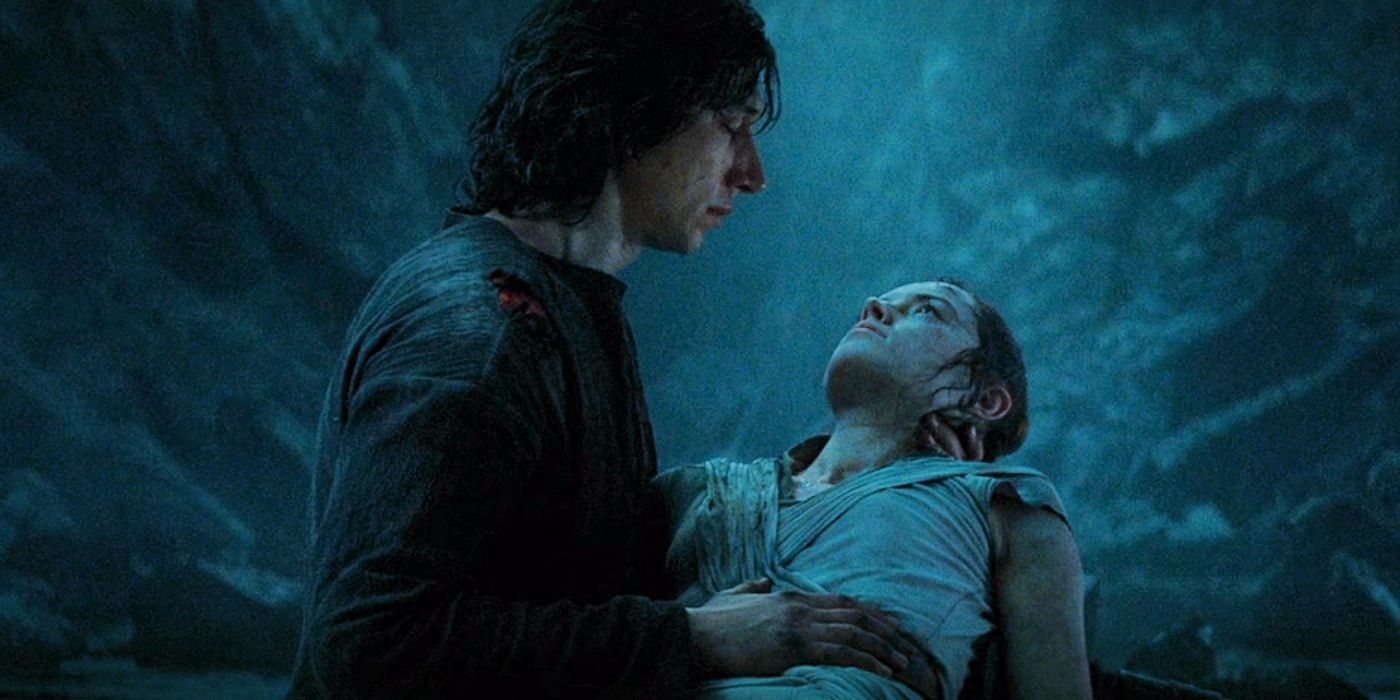
One of the most powerful applications of the Force in the films, Force healing was used in Star Wars: The Rise of Skywalker by Rey to revive a wounded Vexis and a dying Kylo Ren. When Kylo became Ben Solo once more, he resurrected Rey herself moments after her demise. In canon, healing with the Force is not a power that a dark side practitioner can use, and it requires one to transfer their own life energy into another. Because of this, the redeemed Ben Solo died shortly after reviving Rey. While this was the first cinematic appearance of Force healing, this power was seen in a canon live-action story shortly before the release of The Rise of Skywalker. In The Mandalorian, Baby Yoda heals a wounded Greef Karga and simultaneously cures him of the effects of deadly venom.
Force healing was similarly used in the current canon by The Daughter of Mortis to resurrect a deceased Ahsoka Tano. In Legends, the power works differently. Instead of transferring one’s own life energy to another, it’s simply calling on the Force to rapidly heal wounds, cure diseases, and neutralize poisons. It can be used on oneself or another, and, like in canon, is not a power afforded to dark side users. Force healing was a specialty of some Jedi, known as “Jedi Healers.” One such example: The Legends version of Barriss Offee, and her use of the ability on Clone Troopers was seen in the MedStar duology of books.
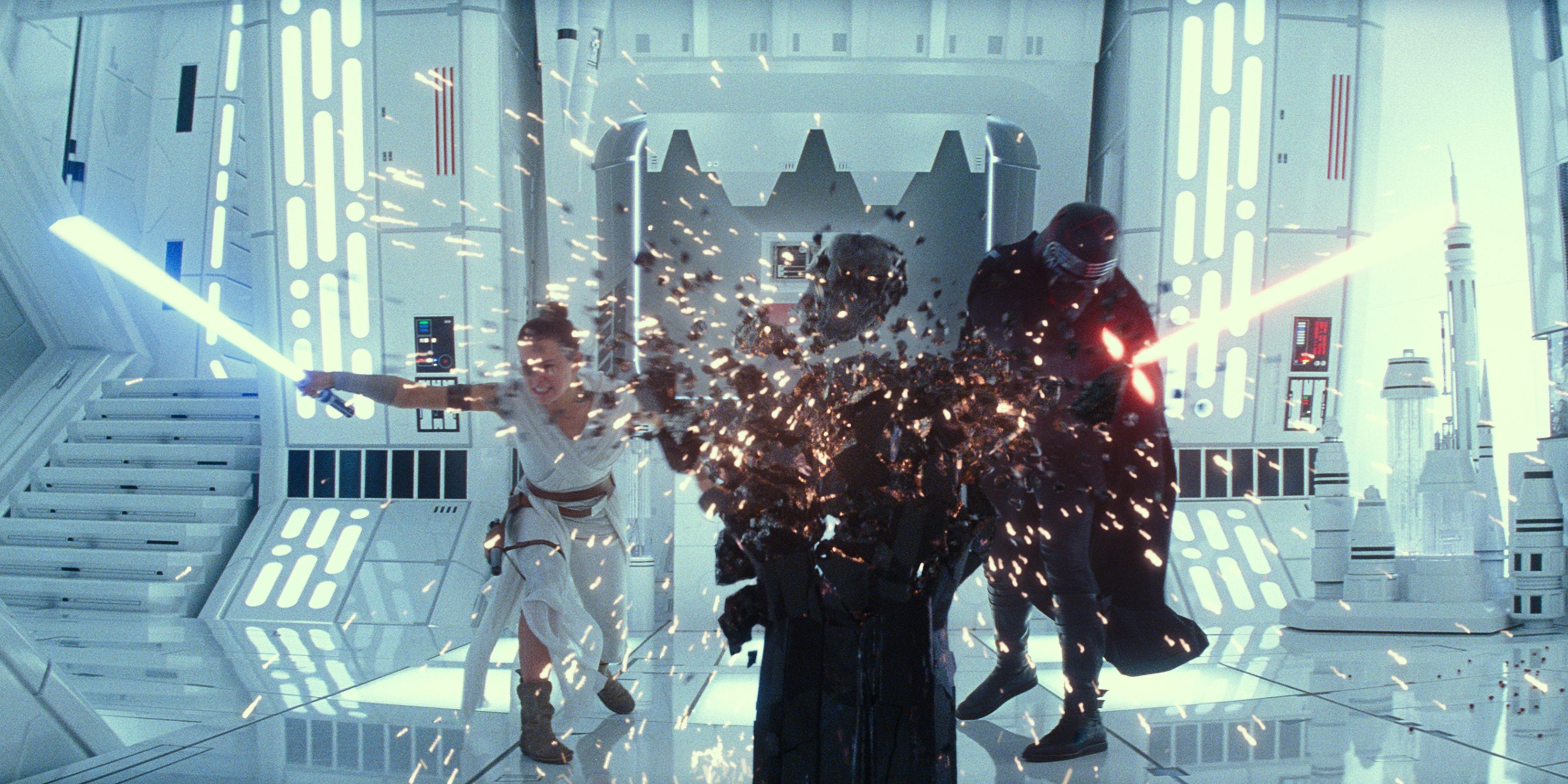
The Force-powered bond between two people made its live-action debut in The Last Jedi with Rey and Kylo Ren, but this use of the Force has appeared many times before in both continuities. A Force bond is where two close beings can communicate and feel each other’s thoughts and feelings more easily through the Force. In canon, Darth Sidious exploited the bond between Yoda and Count Dooku in a bid to turn Yoda to the dark side. Force bonds appeared several times in Legends, such as the ones between Revan and Bastilla Shan, Meetra Surik and Kreia, and the Sithspawn Gorc and Pic.
But the bond between Rey and Kylo Ren goes beyond a typical Force bond, as shown in The Rise of Skywalker. They are a “dyad in the Force,” a concept created in canon in which two beings are essentially one as far as the Force is concerned. In the film, this led to even more unique uses of the Force, such as transferring objects from one person to the other, no matter their distance.
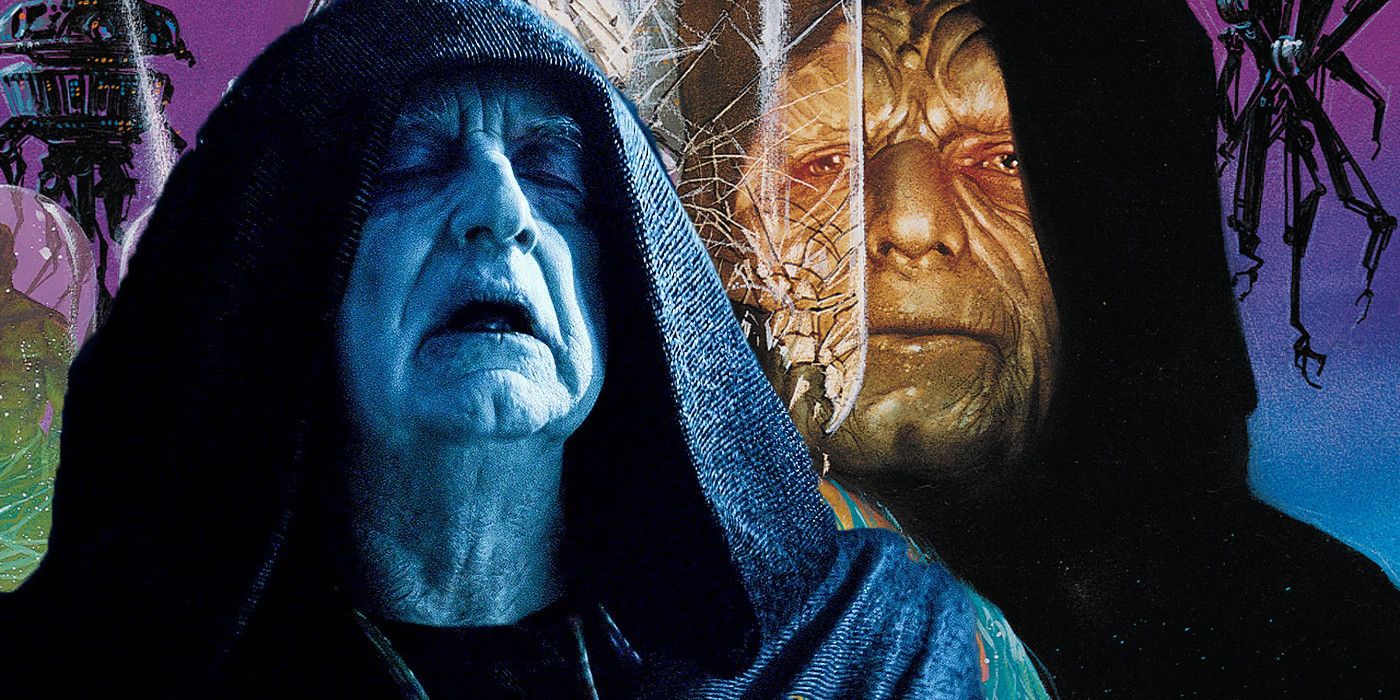
Though not properly explained in the film, the method that Palpatine used to return from the dead in The Rise of Skywalker is transferring his consciousness to a new body. After his death aboard the Second Death Star in Return of the Jedi, Palpatine, who had unstable cloned bodies waiting for him on the Sith world Exegol, transferred his mind into one, returning from the dead, albeit far weaker than he was in his original form. This power, first used almost identically in Legends’ Dark Empire comic series, shows the “unnatural” nature of the dark side and shows that Sidious learned the secrets of immortality from his master, Darth Plagueis.
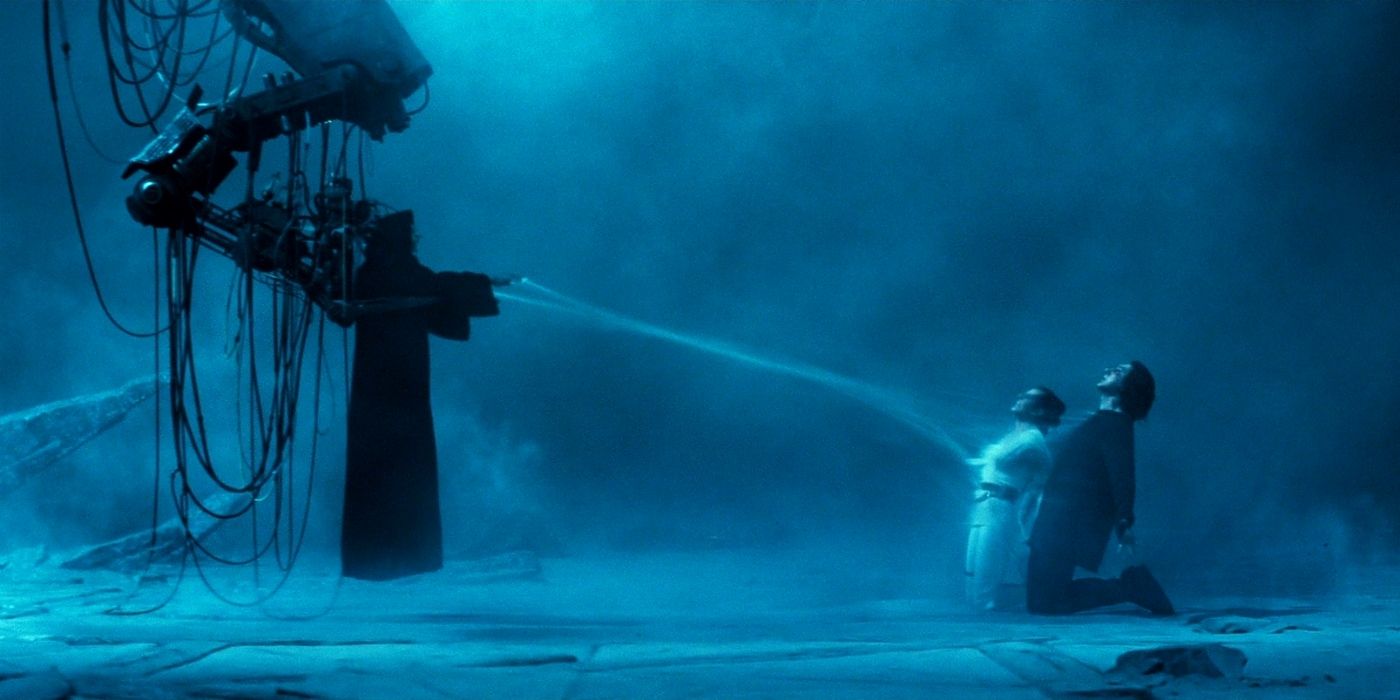
The dark side equivalent to Force healing, this power was used by Sidious to revive himself upon discovering that Rey and Kylo Ren are a dyad in the Force. Sidious revitalized his body, using the combined life energy of the two. This left him with enough additional power to blast frigates out of the sky with his Force lightning. Force drain appears in several Legends-era video games as well, used as a dark side user’s way of replenishing health at the cost of their enemies.
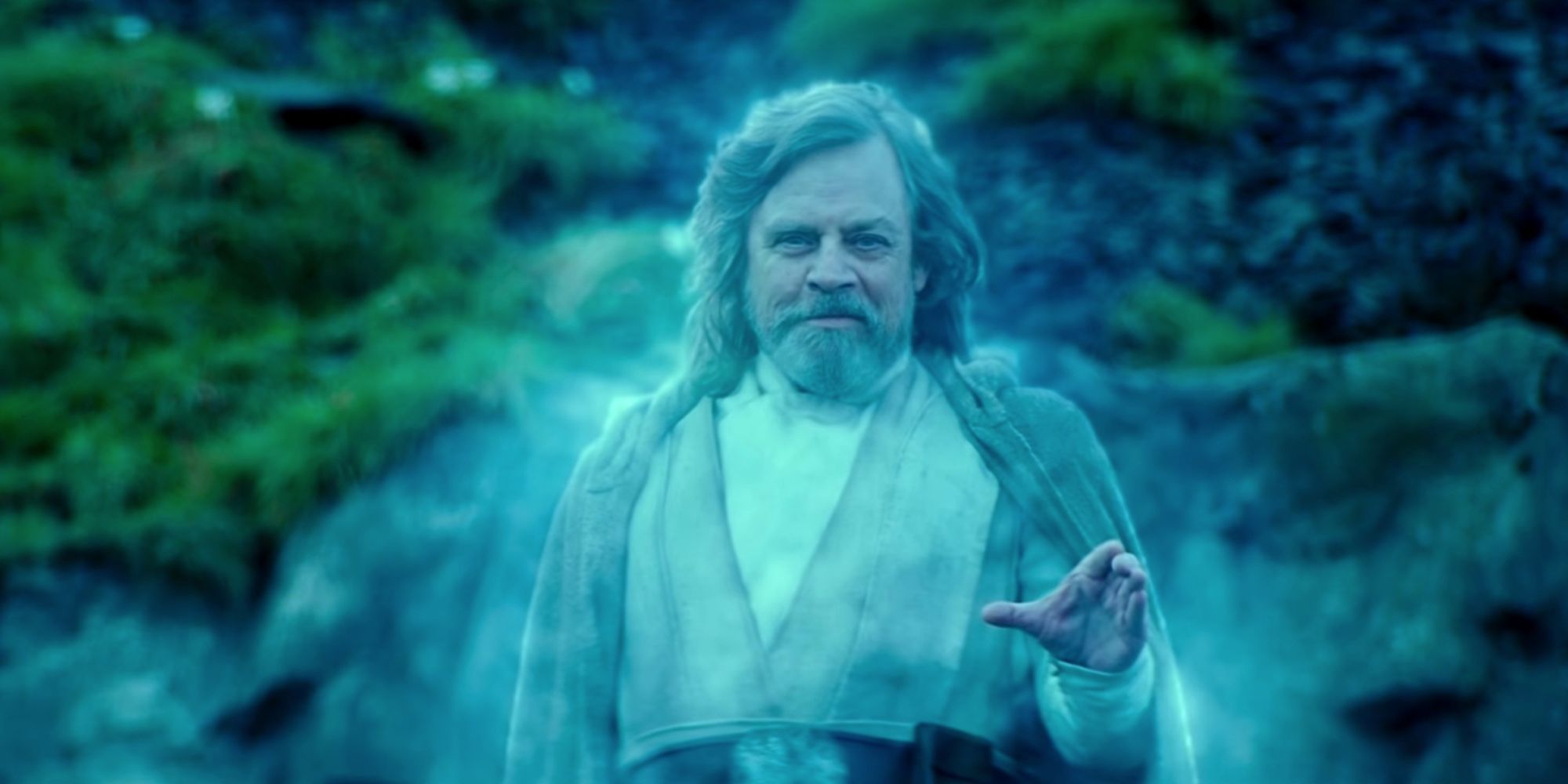
While Force ghosts have existed since the very first Star Wars film, The Last Jedi and The Rise of Skywalker introduce new abilities for them that haven’t been seen before in either continuity. As seen with Yoda and Luke on Ahch-To, they can now interact with solid objects, and in some cases use their own Force powers, such as Yoda summoning a lightning storm and Luke lifting his X-Wing from the water. In one final, awe-inspiring moment, Jedi from throughout the saga lend their power to Rey during her battle against her grandfather, Darth Sidious.
from ScreenRant - Feed https://ift.tt/39vnicE


0 Comments